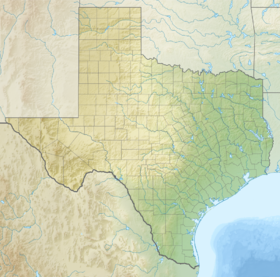Palo Duro Canyons
| Palo Duro Canyon | |
|---|---|

View from the Interpretive Center
|
|
| Floor elevation | 2,828 ft (862 m) |
| Long-axis length | 120 mi (190 km) |
| Width | 20 mi (32 km) |
| Depth | 880 ft (270 m) |
| Geography | |
| Coordinates | 34°57′N 101°40′W / 34.950°N 101.667°WCoordinates: 34°57′N 101°40′W / 34.950°N 101.667°W |
| Watercourses | Prairie Dog Town Fork Red River |
| Designated | 1976 |
Palo Duro Canyon is a canyon system of the Caprock Escarpment located in the Texas Panhandle near the cities of Amarillo and Canyon. As the second-largest canyon in the United States, it is roughly 120 mi (190 km) long and has an average width of 6 mi (9.7 km), but reaches a width of 20 mi (32 km) at places. Its depth is around 820 ft (250 m), but in some locations, it can increase up to 1,000 ft (300 m). Palo Duro Canyon (from the Spanish meaning "hard wood") has been named "The Grand Canyon of Texas" both for its size and for its dramatic geological features, including the multicolored layers of rock and steep mesa walls similar to those in the Grand Canyon.
The canyon was formed by the Prairie Dog Town Fork of the Red River, which initially winds along the level surface of the Llano Estacado of West Texas, then suddenly and dramatically runs off the Caprock Escarpment. Water erosion over the millennia has shaped the canyon's geological formations.
Notable canyon formations include caves and hoodoos. One of the best-known and the major signature feature of the canyon is the Lighthouse Rock. A multiple-use, six-mile round trip loop trail is dedicated to the formation.
Palo Duro Canyon was downcut by the Prairie Dog Town Fork tributary of the Red River, during the , when the whole region was uplifted. Most of the strata visible in the Canyon were deposited during the Permian and Triassic periods. From oldest to youngest, the formations are:
The first evidence of human habitation of the canyon dates back about 10,000–15,000 years, and it is believed to have been continuously inhabited to the present day. Native Americans were attracted to the water of the Prairie Dog Town Fork, Red River, as well as the consequent ample game, edible plants, and protection from weather the canyon provided.
...
Wikipedia

